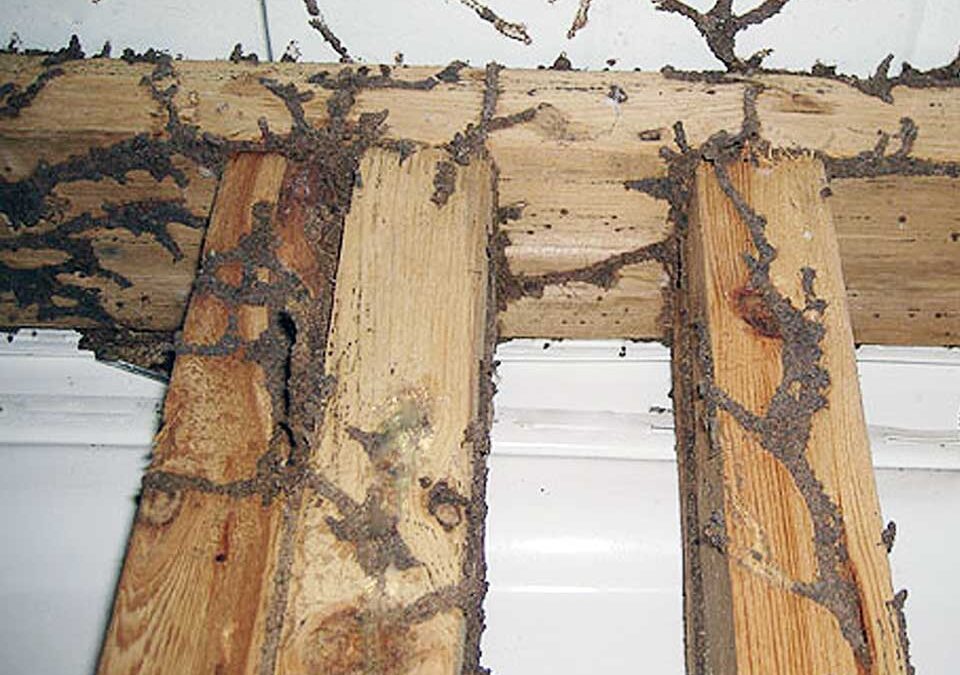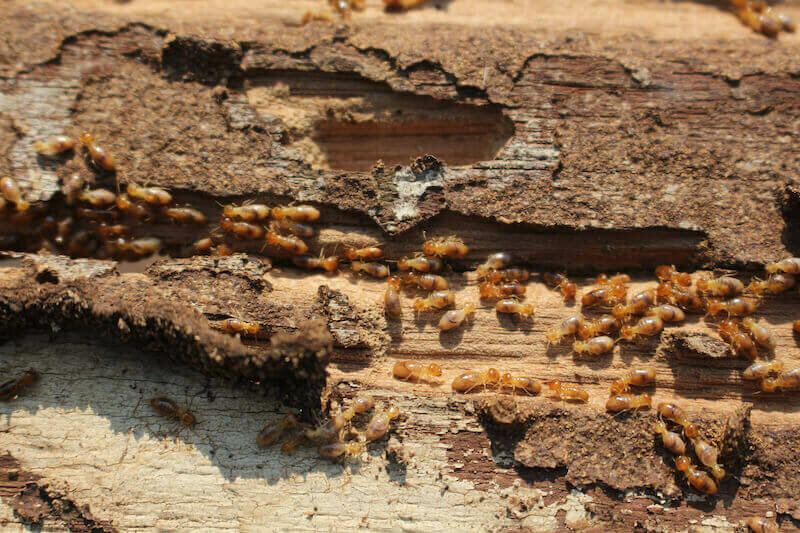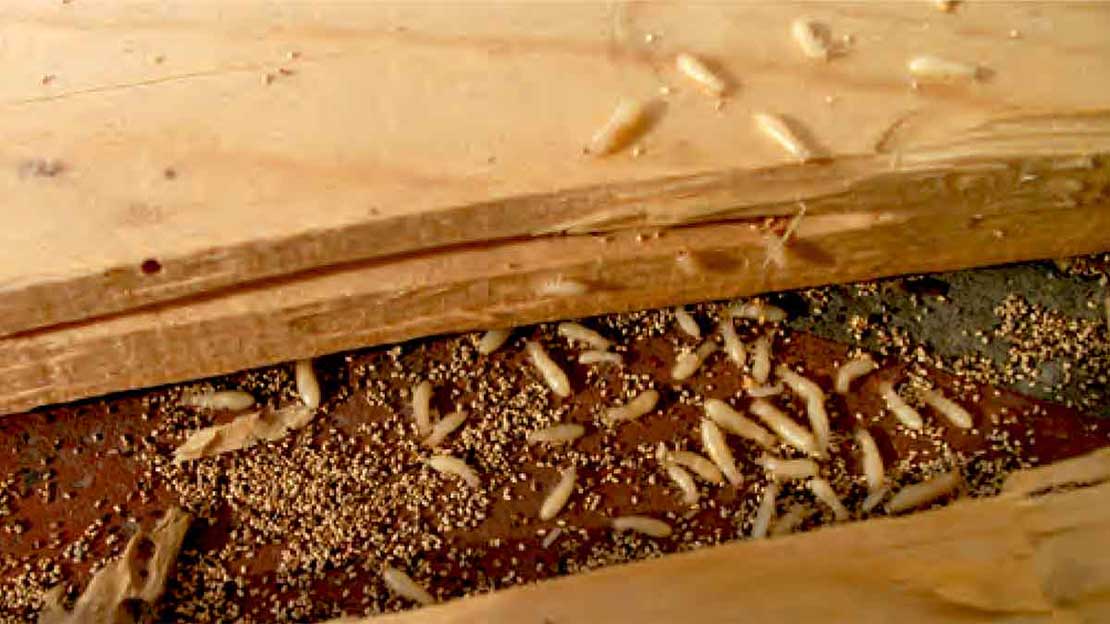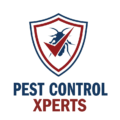Florida’s subtropical climate, characterized by high humidity, abundant rainfall, and warm temperatures, offers termites the ideal conditions they need to thrive. In coastal communities like Fort Pierce and Vero Beach—where mild winters and moist soil provide constant opportunities for foraging—these silent destroyers can infiltrate homes and businesses, wreaking structural havoc if not caught early. With their ability to remain hidden while devouring wood from within, termites can cause significant damage long before property owners realize a problem exists.
This service page explains why termites flourish in Florida, how to detect their presence, and why employing a professional termite exterminator is the most reliable way to halt infestations. While minor problems might be overlooked at first, termites’ rapid reproduction can escalate an issue quickly, leading to costly repairs and concerns about a building’s integrity. By understanding the life cycle, behaviors, and vulnerabilities of termites, you can better protect your structure against one of Florida’s most persistent and destructive pests.
Why Termites Flourish in Florida

1. Mild, Humid Weather
Termites thrive in climates where they have consistent warmth and moisture. Florida’s near-year-round moderate temperatures allow termite colonies to stay active rather than lying dormant in colder months. High humidity—from periodic rains to the everyday moisture of coastal areas—keeps the environment damp enough for subterranean termites, in particular, to construct tunnels and forage for cellulose material with ease.
2. Accessible Food Sources
Termites feed on cellulose, which they find in wood, paper, cardboard, and other plant-based materials. Buildings made of wood framing or featuring wooden support beams present termites with ample sustenance. Mulch in landscaping beds and debris in crawl spaces can also draw termite activity. Once termites locate a reliable cellulose source, they steadily consume it, sometimes remaining undetected until significant structural damage has been done.
3. Variety of Termite Species
Florida hosts multiple termite species, including subterranean (such as the aggressive Formosan and Asian subterranean termites) and drywood termites. Each species has distinct nesting habits: subterranean termites build underground colonies and travel via mud tubes, whereas drywood termites settle directly in wooden structures. This diversity means that Florida properties can be vulnerable to various infestation types requiring targeted approaches.
4. Year-Round Colonization
A termite colony can number in the hundreds of thousands, with queens capable of producing thousands of eggs daily. Because Florida rarely experiences extended freezes, colonies can remain active and expand throughout the calendar year. Swarming events—when reproductive termites leave the nest to start new colonies—can happen in multiple seasons, depending on species and environmental triggers like rain and temperature shifts.
Telltale Signs of Termites
1. Discarded Wings
When reproductive termites (swarmers) depart their original colony, they soon shed their wings. Finding piles of these translucent, often slightly smoky or brownish wings near windowsills, door frames, or light sources is one of the most noticeable indicators that termites are present and establishing new nests.
2. Mud Tubes
Subterranean termites construct narrow, pencil-sized mud tubes to maintain humidity while traveling between their underground nest and aboveground food. These tubes often appear along foundation walls, crawl space supports, or even interior walls. If you break open a fresh mud tube and see live termite workers, it confirms active infestation.
3. Hollow-Sounding Wood
Termites eat wood from the inside out. Tapping on wooden beams, floorboards, or window frames that termites have damaged may produce a hollow sound—caused by an empty cavity left behind as the insects consume the material. If you gently probe or break a weakened section, you might discover tunnels etched into the wood grain, a surefire sign that termites have been feeding there.
4. Frass (Pellet Droppings)
Drywood termites often leave small, pelletized droppings known as frass. These droppings accumulate near the tiny holes they create to dispose of waste. Appearing as small, wood-colored or dark brown specks, frass piles often show up on windowsills, furniture edges, or floors, indicating a drywood termite presence.
5. Buckling Paint or Swollen Walls
As termites consume wooden components inside walls or frames, moisture may accumulate. This causes paint to bubble, blister, or peel off. In advanced cases, interior walls can show signs of warping or disfiguration. Unexplained cracks or distorted plaster could also point to structural weakening from long-term termite activity.

Risks of Ignoring Termites
1. Severe Structural Damage
Termites can silently eat through support beams, flooring, and other load-bearing elements. Over time, this compromises the integrity of a building, leading to sagging roofs, uneven floors, or, in the worst scenarios, partial collapses. Correcting advanced termite damage often entails significant, costly reconstruction work.
2. High Repair Costs
When an infestation persists, remediation efforts become more extensive and expensive. Replacing rotted beams, treating widespread infestations, and restoring damaged finishes can strain budgets. Early detection and prompt action help contain expenses, saving property owners considerable trouble down the line.
3. Reduced Property Value
Evidence of termite damage or an ongoing infestation can erode a property’s market value. Prospective buyers and tenants may hesitate to invest if they suspect significant repairs or repeated infestations await them. Even after thorough treatment, stigma and uncertainty may linger around a property with a known termite history.
4. Secondary Problems
Moisture build-up from termite tunneling or mud tubes can encourage mold growth or attract other pests (like ants or roaches) seeking damp or decaying materials. In multi-unit buildings or close-knit neighborhoods, termite activity in one property can spread through shared walls or landscaping features, creating wider community issues.
5. Insurance Complications
Most home insurance policies consider termite damage preventable or a maintenance issue, meaning losses due to termites often aren’t covered. Neglecting basic inspections or failing to act on known infestations could leave homeowners footing extensive repair bills out of pocket.
Why a Professional Exterminator Is Crucial
1. Species Identification
Determining whether you’re dealing with subterranean or drywood termites (or multiple species) shapes the necessary control approach. A knowledgeable termite exterminator identifies the type of termite, inspects the extent of infestation, and proposes treatments best suited to that species’ behavior.
2. Thorough Property Evaluation
Professionals are trained to spot less obvious signs of termite activity—like hidden mud tubes, frass in overlooked corners, or small entry points in attic rafters. They employ moisture meters, borescopes, or infrared cameras to detect damage behind walls or under floors that a cursory inspection might miss.
3. Targeted Treatment Methods
Over-the-counter termite treatments often lack the potency or precision needed for complete eradication. Licensed exterminators employ specialized tools and products—like termiticide barriers, foams, baits, or fumigation techniques—that penetrate colonies. These carefully administered solutions ensure thorough termite elimination without undue risk to occupants.
4. Preventing Recurrence
In addition to treating current infestations, professionals focus on sealing structural gaps, improving drainage, and recommending wood repairs or replacements where needed. They also install bait stations or perform routine checks to catch termite activity early, reducing the chance of reinfestation.
5. Expertise and Follow-Up
Termite colonies can remain active underground or within walls, requiring ongoing observation. Many exterminators offer re-inspections or warranties that cover additional treatments if termites reappear. This support ensures lasting protection and peace of mind for property owners.

Typical Methods for Termite Treatments
1. Inspection and Mapping
Before any treatment, a licensed inspector evaluates all accessible parts of the structure—attics, crawl spaces, foundations, and exterior walls—to identify termite species and infestation severity. They document each location where mud tubes, damage, or droppings appear, creating a blueprint for targeted treatment.
2. Liquid Barrier Applications
Subterranean termites often require a liquid termiticide barrier around the foundation. Technicians trench or drill along perimeters, inject termiticide into the soil, and seal holes. This barrier kills or repels termites that attempt to enter, while also targeting colonies in contact with treated soil. Modern termiticides can remain effective for years, forming a reliable shield if applied correctly.
3. Bait Stations
Baiting systems combat subterranean termites by drawing worker termites to stations containing cellulose and a slow-acting toxin. Workers consume the bait, carry it back to the colony, and gradually expose the queen and other members to the lethal compound. This approach can eliminate entire colonies over time, though it requires periodic station checks and replenishments.
4. Fumigation for Drywood Termites
Severe drywood termite infestations may demand fumigation. Professionals tent the structure and release a fumigant that penetrates wood to kill termites in every life stage. While highly effective, fumigation necessitates vacating the premises for one to two days, as well as adhering to safety protocols before re-entry.
5. Spot and Foaming Treatments
Localized infestations of drywood termites might be addressed by injecting insecticidal foam or dust into galleries and voids. Technicians drill small holes in wood or walls and deliver targeted products that spread within hidden channels. Spot treatments work best when the colony is confined to a specific, accessible area.
Service Areas
Fort Pierce
Located on Florida’s Treasure Coast, Fort Pierce enjoys a blend of historic charm, coastal breezes, and tropical landscaping. Unfortunately, this region’s conducive conditions for termites—such as warm weather, lush yards, and older architecture—make professional termite control essential. Whether you own a waterfront bungalow or a commercial space downtown, a termite exterminator in Fort Pierce can safeguard your investment by detecting, treating, and preventing further termite activity.
Vero Beach
North of Fort Pierce lies Vero Beach, another attractive coastal community known for its cultural scene and upscale neighborhoods. Drywood termites, drawn to attic timbers or wooden patios, can cause extensive, hidden damage. Subterranean termites, meanwhile, can exploit any wood-to-soil contact around landscaping. Exterminators in Vero Beach tackle these challenges with tailored solutions, from partial treatments to full-structure fumigations, ensuring that homeowners and businesses remain termite-free.
Why Our Termite Treatments Excel
1. Florida-Centric Experience
Years of eradicating termites in coastal locales give our team extensive insight into the specific species and climate-driven behaviors plaguing Fort Pierce and Vero Beach. We track local swarming seasons, watch for newly introduced termite varieties, and fine-tune our strategies to meet Florida’s unique demands.
2. Thorough Inspections and Tailored Solutions
Every home or business has distinct vulnerabilities. We begin by conducting a comprehensive inspection, employing moisture meters, thermal imaging, or borescopes if necessary. Based on findings—whether subterranean tubes around foundations or drywood pellets in attics—we outline a plan that might include barrier treatments, fumigation, or spot applications.
3. Emphasis on Safety and Minimal Disruption
Our licensed termite exterminator professionals choose products and techniques that prioritize occupant safety and structural well-being. We communicate clear guidelines on preparation, reentry times, and follow-up so you understand each step. The goal is an effective termite treatment that doesn’t drastically interrupt daily life.
4. Preventive Education and Warranty Options
Eliminating current termite colonies is only half the battle. We offer advice on sealing gaps, reducing wood-to-soil contact, fixing leaks, or replacing compromised wood. Many of our services come with warranties or re-inspection programs to ensure long-term peace of mind. If termites return, we’re ready to re-evaluate and apply necessary measures.
5. Swift Response and Comprehensive Coverage
Termites can cause extensive damage quickly, highlighting the need for prompt intervention. We schedule inspections and treatments in a timely manner, ensuring small issues don’t balloon into major crises. Our multi-pronged approach—ranging from advanced termiticides to thorough follow-ups—provides comprehensive coverage that keeps termites at bay.
Next Steps
If you notice discarded wings, mud tubes along foundations, or mysterious wood damage, it’s crucial to act before the situation worsens. Contact us to learn more or schedule your service. Early intervention with a professional termite exterminator limits repair costs, protects property value, and helps you avoid prolonged stress about unseen damage.
Our methods address the full termite life cycle—killing active workers and queens while preventing new colonies from finding entry. Whether you manage a historic building in Fort Pierce or an upscale residence in Vero Beach, a strategic termite treatment plan can secure your structure against these pests’ relentless appetite. Let us provide the expertise and proven solutions required to maintain a termite-free environment.
Maintaining a Termite-Free Environment
- Reduce Wood-to-Soil Contact
Keep wooden siding, fence posts, or deck supports from touching moist soil. Elevate wood piles off the ground and away from your home. Termites often enter through direct contact points, so breaking this path is key. - Address Moisture Issues
Repair leaky plumbing, air conditioner drips, or poor drainage areas that could saturate soil or invite fungal growth. Termites gravitate toward damp conditions, and mitigating excess moisture makes your property less hospitable. - Store Cellulose Materials Carefully
Cardboard boxes or stacks of old newspapers can become termite magnets if left in humid corners. Use plastic bins instead, and periodically declutter closets, garages, or sheds to avoid creating termite-friendly hideouts. - Landscape Wisely
Space mulch or wood chips a few inches away from the foundation, so termites don’t have a direct bridge to the building. Trim shrubs and groundcover near walls, allowing better air circulation that keeps soil drier. - Seal Entry Points
Close gaps around utility penetrations, fix cracked stucco, and ensure windows or vents are well-screened. Even small openings near rooflines or eaves can let termites crawl inside, so regular inspections and maintenance reduce these entryways. - Schedule Routine Inspections
In Florida’s termite-prone climate, annual or biannual professional inspections detect early signs before damage spreads. Technicians can spot subtle changes, like frass accumulations or emergent mud tubes, recommending proactive measures if a fresh colony appears.
By following these preventive steps and partnering with a trusted termite exterminator, home and business owners in Fort Pierce and Vero Beach can safeguard their properties against extensive, costly damage. Florida’s consistent warmth may fuel termite activity year-round, but a strategy that combines vigilance, structural upkeep, and expert treatment will keep your building’s wooden framework strong and resilient for many years to come.
